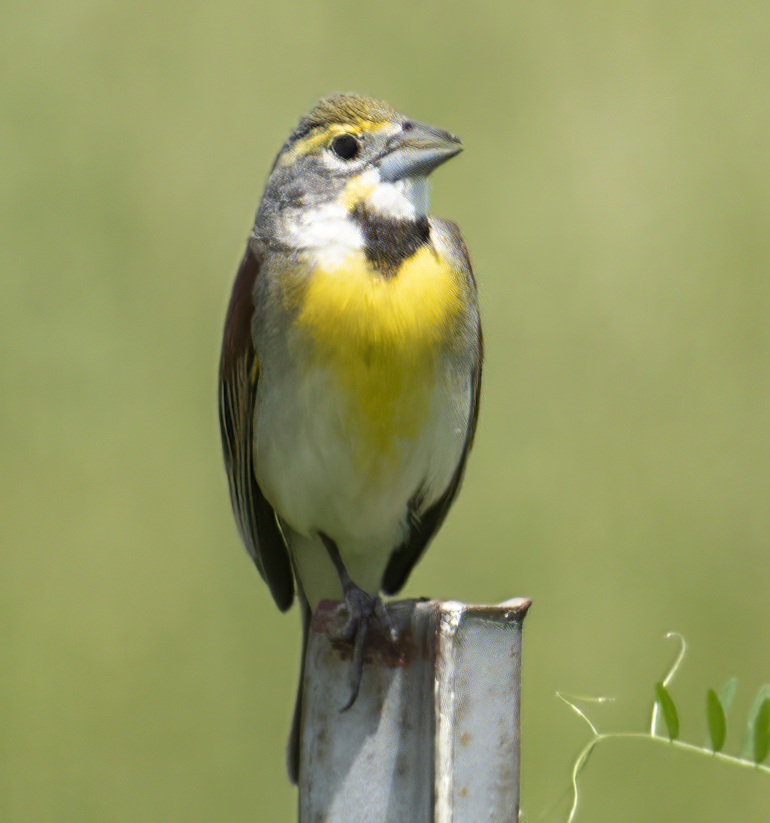
By Grace Huffman
It’s June, and that means that fields everywhere are filled with one of the sounds of summer: singing Dickcissels. Some of my earliest birding memories involve riding out to Piedmont to what was then a series of large wheat fields to watch the sunset and listen to the meadowlarks and Dickcissels.
They are sparrow-sized birds that are streaky brown on the back and tail, with yellow on the face and chest. Males are usually brighter yellow and have a black bib. Both males and females have a hefty bill. Even though they may look like sparrows, they are actually in the same family as cardinals and buntings. They spend their summers across much of the central United States in pastures and fields, and you will usually find a decent number out for a drive in the country, or anywhere there are large fields with taller grass. This spring I saw what was probably the biggest flock of Dickcissels I’d ever seen with roughly 250 of them in a field feeding with Bobolinks. But that’s a small number compared to other migratory flocks that can number in the thousands. On their wintering grounds in South America those flocks can reach millions of birds.
They nest near the ground, with the female building a cup nest to hold her eggs. Her brood will consist of 3-6 eggs, and she may raise a second brood as well. However, nests have been found as high as 10 feet off the ground where there was taller vegetation.
Dickcissels are currently considered to be of low concern, but are still facing a decline in population. The biggest threats are loss of habitat as fields are converted for development, or hayfields are mown before their young fledge. On their wintering grounds in Venezuela they are considered pests as they eat the grain crops. Huge numbers have been killed by wintering flocks being sprayed with pesticides at night at their roosting sites. Changing agricultural practices and crops, as well as the reduced number of Dickcissels means less is being eaten by the birds, but they are still targeted.
Reference: allaboutbirds.org
